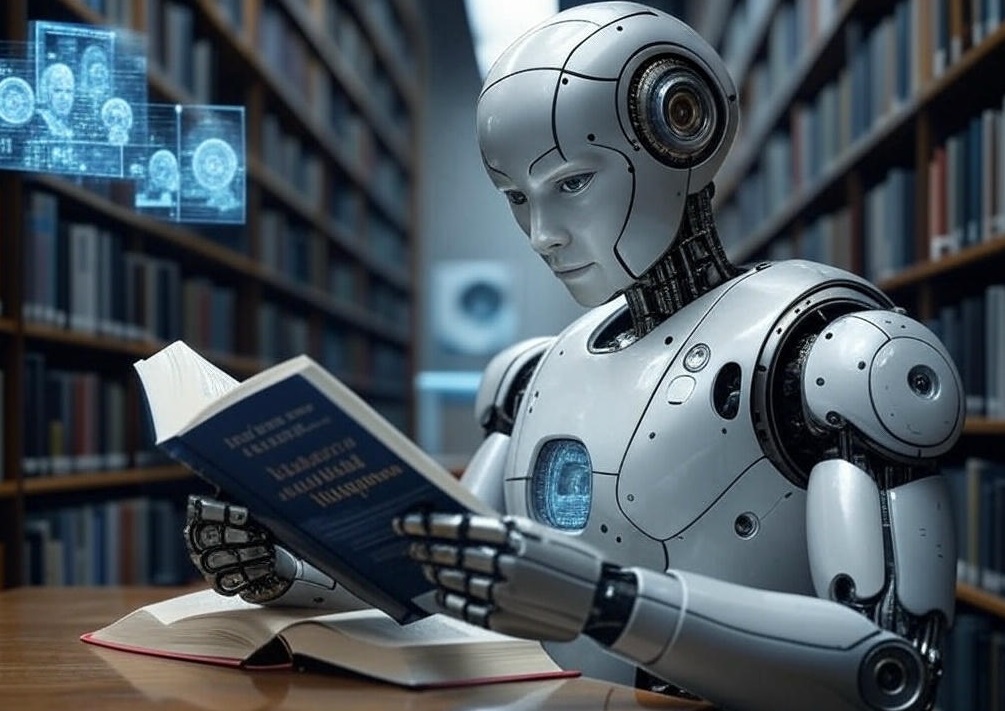
Artificial Intelligence (AI) is one of the most exciting and rapidly developing fields in modern science and technology. But how did we get to the point where AI is used in so many industries, from medicine and education to automobiles and finance? The path of AI has been long and fascinating, with each step bringing something new and important. Let’s recall the key moments in AI history to understand how the technologies evolved and what the future holds for this field.
Early Experiments and Theoretical Foundations
The first steps in the field of artificial intelligence were taken in the mid-20th century. In the 1950s, British mathematician and logician Alan Turing proposed the concept of a machine capable of imitating human thought processes. His famous “Turing test” is still used as one of the criteria for evaluating machine intelligence.
A significant moment in AI history came in 1956 with the Dartmouth Conference, where the term “artificial intelligence” was officially introduced. Leading scientists such as John McCarthy, Marvin Minsky, Nathaniel Rosenblatt, and others proposed various ideas for creating machines capable of learning and making decisions.
1950s-1970s: Early Successes and Disappointments
In the 1960s and 70s, scientists developed the first programs capable of solving logical problems. Programs like Logic Theorist and General Problem Solver were able to solve mathematical and logical tasks. However, despite some successes, creating truly intelligent machines was still far from reality.
Nevertheless, these experiments laid the groundwork for further AI development. During this period, the first neural networks were created, capable of “learning” from examples, and the first expert systems were developed, which were used for disease diagnosis and decision-making in various professional fields.
1980s-2000s: Expert Systems and Neural Networks
From the 1980s, AI began to make noticeable progress. Expert systems such as MYCIN (for diagnosing infectious diseases) demonstrated real successes in creating programs that could effectively simulate the decisions of experts. However, neural networks at that time still lacked the power to solve more complex tasks.
A significant event was the creation of the Deep Blue computer in the late 1990s, which in 1997 defeated world chess champion Garry Kasparov. This became a landmark moment in AI history, showing that machines could not only solve complex tasks but also outplay humans in strategic games.
2000s-2010s: The Era of Machine Learning and Big Data
In the 2000s, AI made a qualitative leap with the development of machine learning and the emergence of big data. Machine learning models such as support vector machines and random forests began to be used for a wide range of tasks, from image recognition to natural language processing.
However, it was with the advent of neural networks and deep learning algorithms in the 2010s that AI began to develop faster than ever before. Face recognition, voice command technologies, and machine translation became everyday realities.
Modern AI and Its Impact on the World
Today, artificial intelligence is used across many industries: from autonomous vehicles to healthcare, where AI helps diagnose diseases at early stages. AI-powered software is used in finance, analyzing large datasets to predict market trends, and in security, helping with monitoring and threat prevention.
In the coming years, AI will continue to improve, refine its algorithms, and become more accessible to everyone. Specifically, AI technologies will be actively used to create smart cities, improve the environment, and create new solutions to global challenges such as climate change.
Conclusion: AI and the Future of Technology
Artificial intelligence has come a long way, and each step in its development was an important move toward AI becoming an integral part of our lives. The future of AI opens up new horizons, and today we can already see how these technologies are changing not only business but the entire world. The important thing is that AI continues to evolve, and in the coming decades, we will witness how artificial intelligence will have an increasing influence on society.
